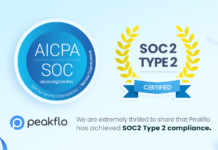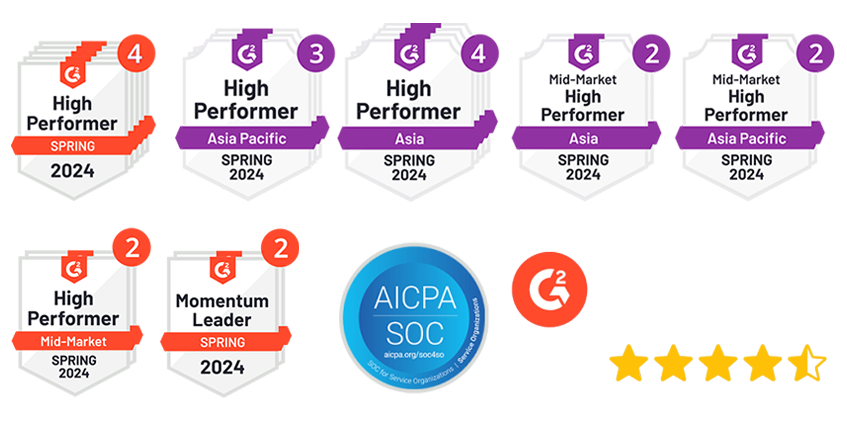Accounts receivable management is an integral part of the back-office operations of any organization. However, mid-sized businesses do not have the proper resources and IT infrastructure to support the growing needs of the business.
Outstanding receivables have a direct impact on the cash flow of the business. Therefore, mid-market CFOs are constantly seeking to optimize AR management processes. It’s not rare to see businesses missing a robust Accounts Receivable Management system. This could set up a domino effect of financial issues in the future.
To avoid such problems, it’s essential to nail down a system to handle your AR like a pro, making sure that invoices are always paid on time and you’re aware of your outstanding receivables. A healthy blend of reliable collections approach and compliant practices is your key to navigating the world of AR management smoothly, which is what we’ll discuss in this article.
What Is Accounts Receivable Management?
Accounts receivable management is the process of ensuring that your business receives prompt and consistent payments for goods or services provided, thereby reducing overdue bills and the staff effort required for collections.
This function spans numerous areas, from extending credit and managing customer relationships to invoicing, tracking payment trends, performing collections, and reconciling received payments.
Importance of Accounts Receivable Management for Mid-Sized Business
Effective accounts receivable management is crucial for mid-sized businesses as it ensures a steady cash flow and timely collections. By monitoring and optimizing receivables, businesses can minimize late payments, reduce the risk of bad debts, and maintain healthy working capital. This financial discipline allows mid-sized businesses to meet operational expenses, invest in growth initiatives, and strengthen their overall financial stability. Additionally, streamlined accounts receivable processes enhance relationships with customers, fostering trust and reliability in the business ecosystem.
Here are the key benefits of Accounts Receivable Management:
- Cash Flow Management: accounts receivable management plays a pivotal role in maintaining a steady cash flow, especially crucial during economic volatility or company growth.
- Strengthened Customer Relationships: Effective AR management fosters loyalty by accurately handling invoices and supporting documentation, thus reducing payment disputes.
- Smooth Account Reconciliation: By keeping transaction and payment records up-to-date, AR management facilitates seamless account reconciliation.
- Enhanced Business Reputation: Efficient AR management ensures customers have a positive payment experience, thereby boosting your business’s reputation.
- Improved Employee Experience: Optimized AR management enables the accounting team to focus on strategic initiatives rather than administrative tasks, leading to higher employee satisfaction.
- Cash Reserve Maintenance: Efficient AR management ensures enough cash to cover important operations like salaries, purchases, and dividends.
- Attract Investors: A proficient accounts receivable management and a good track record for collecting payments signal healthy balance sheets, making your business more appealing to investors and lenders.
Tips to Optimize Accounts Receivable Management
Optimizing accounts receivable management revolves around a couple of key aspects for mid-sized businesses.
Map Out Current AR Workflows
It’s essential to understand your organization’s entire accounts receivable process to pinpoint areas for improvement.
Common issues include delayed or inaccurate invoicing, unclear payment terms, inefficient follow-ups, inadequate credit policies, poor dispute management, lack of visibility into invoice status, and inadequate staff training.
Track the KPIs
A pivotal task for AR staff is to use the right Key Performance Indicators (KPIs).
- Days in Sales Outstanding
- Average Receivable Days
- Cash Conversion Cycle
- Days in Delinquency
- Collection Effectiveness Index
Send Invoices on Time
Sending invoices on time is one of the most important practices of accounts receivable management. Timely invoicing accelerates payment cycles and minimizes the risk of late payments. It also reflects professionalism, builds trust with clients, and contributes to a positive business reputation.
Utilize Robust Collection Strategy
Implementing a robust collection strategy involves leveraging the accounts receivable aging report to segment customers into aging buckets. Plan dunning outreach as per the aging risk category. Prioritize high-risk accounts first to address critical issues promptly. This proactive approach enhances cash flow by efficiently managing collections and mitigating the impact of overdue payments, ensuring financial stability for the mid-sized business.
Send Multi-Channel Reminders
Send reminders through multiple channels like emails, WhatsApp, or other messaging platforms when invoices are overdue. Document each customer contact to improve internal tracking and create an audit trail if needed.
Prioritize Credit Policy
Set up a clear credit policy. Do not extend the credit terms to unqualified clients just to increase sales because it will bite you in the long run. You also want to track credit limits and client credit behavior.
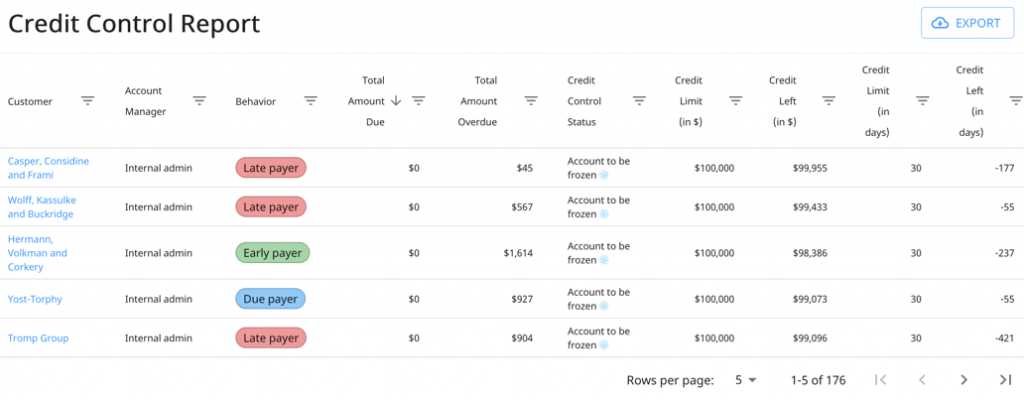
Provide Ease of Payment
Make it as easy as possible for clients to remit payments by creating self-service customer payment portals, accepting a range of payment options, and enabling payment plans or subscription billing.
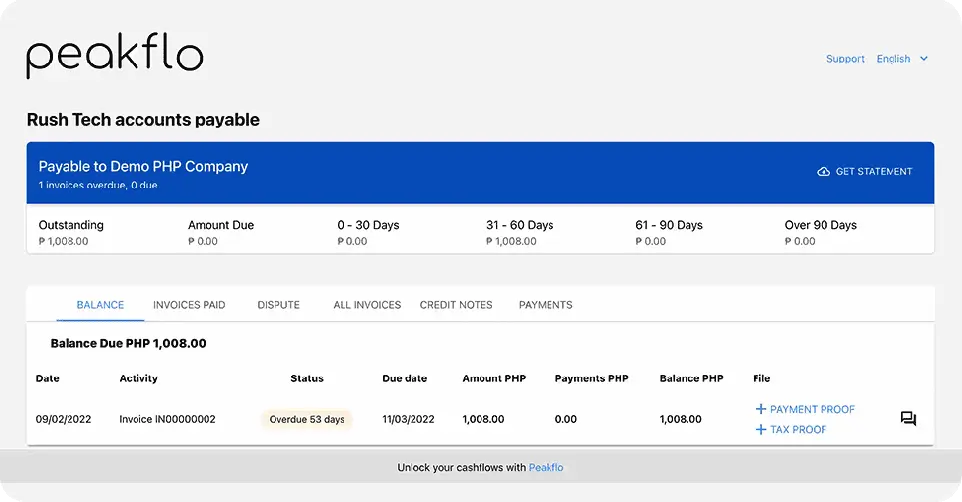
Elevate your customers’ payment experience with Peakflo’s all-in-one customer portal, where customers can pay using their preferred method, attach proofs, and view account summaries with ease.
Forecast Cash Flow Performance
Use advanced reporting to gain insights from your invoicing and payment processes. Accurate forecasting of cash flow and expected payment receipts can guide capital improvements and lead to more informed business decisions.

Improve Communication
Engage your AR staff regularly on set policies and procedures to make sure your policies still make sense and that everyone understands what they are.
Also, make sure your clients are getting the right information from your business. Customers should be able to reach you easily to ask questions, raise concerns, and understand their balances.
Manage Disputes Effectively
Good accounts receivable practices enable businesses to accurately create, issue, and recall invoices, avoiding payment disputes and strengthening customer relationships over time.
Improve Record Keeping
Maintain timely and accurate transaction and payment records to ensure account balances are up-to-date and make account month-end reconciliation smoother.

Focus on Strategic Initiatives
Optimized accounts receivable management allows the accounting team to focus more on strategic initiatives rather than administrative duties, leading to higher employee satisfaction and better strategic outcomes.
Automate Where Possible
The most effective way to improve accounts receivable management is to automate as much as possible. Automation helps to reduce human error, speed up billing and collections, increase employee productivity, and improve reporting and forecasting.

Common Mistakes Companies Make When Managing Accounts Receivable
Managing accounts receivable (AR) is a critical aspect of any business, but many fall into common pitfalls, such as neglecting AR management until it becomes a problem.
This can lead to cash flow issues, damage customer relationships, and disrupt supplier ties. Here are five common mistakes to avoid:
Mistake #1: No AR Policy
Effective accounts receivable management requires a consistent approach. Without a clear AR policy, tracking customer payments and due dates becomes challenging, leading to late payments and cash flow disruptions.
Despite this, many businesses lack a formal AR policy, resulting in unclear procedures and potential mistakes. A well-defined AR policy provides clear guidance for employees, improving AR management and compliance requirements.
Mistake #2: Inefficient Technology
In today’s digital age, efficient technology is crucial for AR management. However, many companies still use outdated methods like Excel for AR tasks due to a lack of tools or the perceived cost and time of digital transformation.
Some may use accounting software for cash flow visibility but lack an effective system for invoice tracking and management.
Implementing a comprehensive system can help avoid these issues, improve cash flow, and streamline payment processing.
Mistake #3: Ineffective Communication
Clear communication with internal stakeholders and clients is vital for successful AR management.
Misunderstandings can lead to confusion about account actions, resulting in inefficient collection strategies and poor customer service.
Good communication practices can enhance relationships and improve the overall customer payment experience.
Mistake #4: Extending Credit to Unqualified Customers
Extending credit to unqualified customers is a common mistake that can lead to bad debt and financial difficulties. This often occurs due to a lack of data insights and visibility into client behavior.
It’s important to assess a customer’s ability to repay before extending credit, which can be facilitated through effective credit management practices.
Mistake #5: Inaccurate Records
Inaccurate invoicing due to insufficient technology can lead to customer disputes, prolonged cash collection periods, and increased operational costs. These inaccuracies can decrease customer satisfaction and result in financial losses.
An effective invoicing system is essential for smooth operations and dispute resolution.
How Peakflo Can Help
Realizing the importance of AR management is the first step in the right direction. You can then formulate a comprehensive AR policy and set procedures accordingly. This will help ensure that your company can effectively manage its accounts receivable and avoid any potential issues that could arise.
You may need to arrange the right tools for your AR department. It’s worth investing in a system that will keep your cash flows flowing. The right tools can make all the difference in terms of efficiency and effectiveness, so it’s important to take the time to choose wisely.
Peakflo increases transparency and gives you full visibility into your accounts receivable status. With Peakflo, you can see exactly how much money is owed to you, who owes it, and when it is due.
This information is updated in real-time, so you can always be sure that you’re getting the most accurate picture of your finances.
The comprehensive tool streamlines collections by:
- Automating payment reminders with workflows
- Providing credit limit overviews with the Credit Control Report
- Enabling customer electronic payments with the Customer Portal
- Tracking relevant metrics on our dashboard
- Pursuing delinquent accounts by issuing Letters of Demand on your behalf
Sounds interesting?
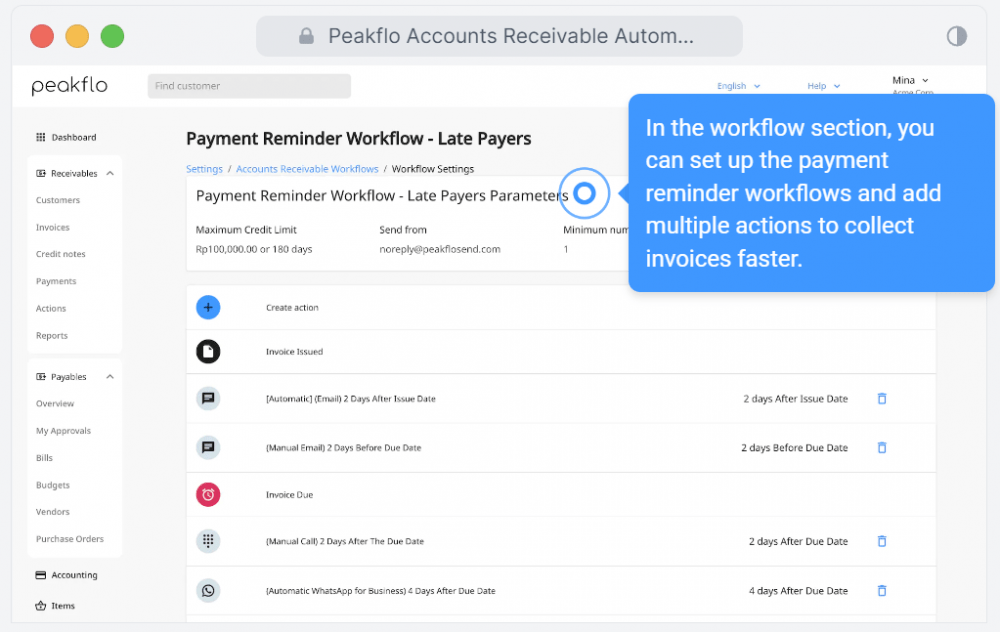










![Why AI Sales Calls Are Making Good Sales Reps Even Better [2025 Guide] ai sales calls](https://blog.peakflo.co/wp-content/uploads/2025/09/65168cf6-3001-4733-8cbc-12d5684cf449-218x150.webp)




























